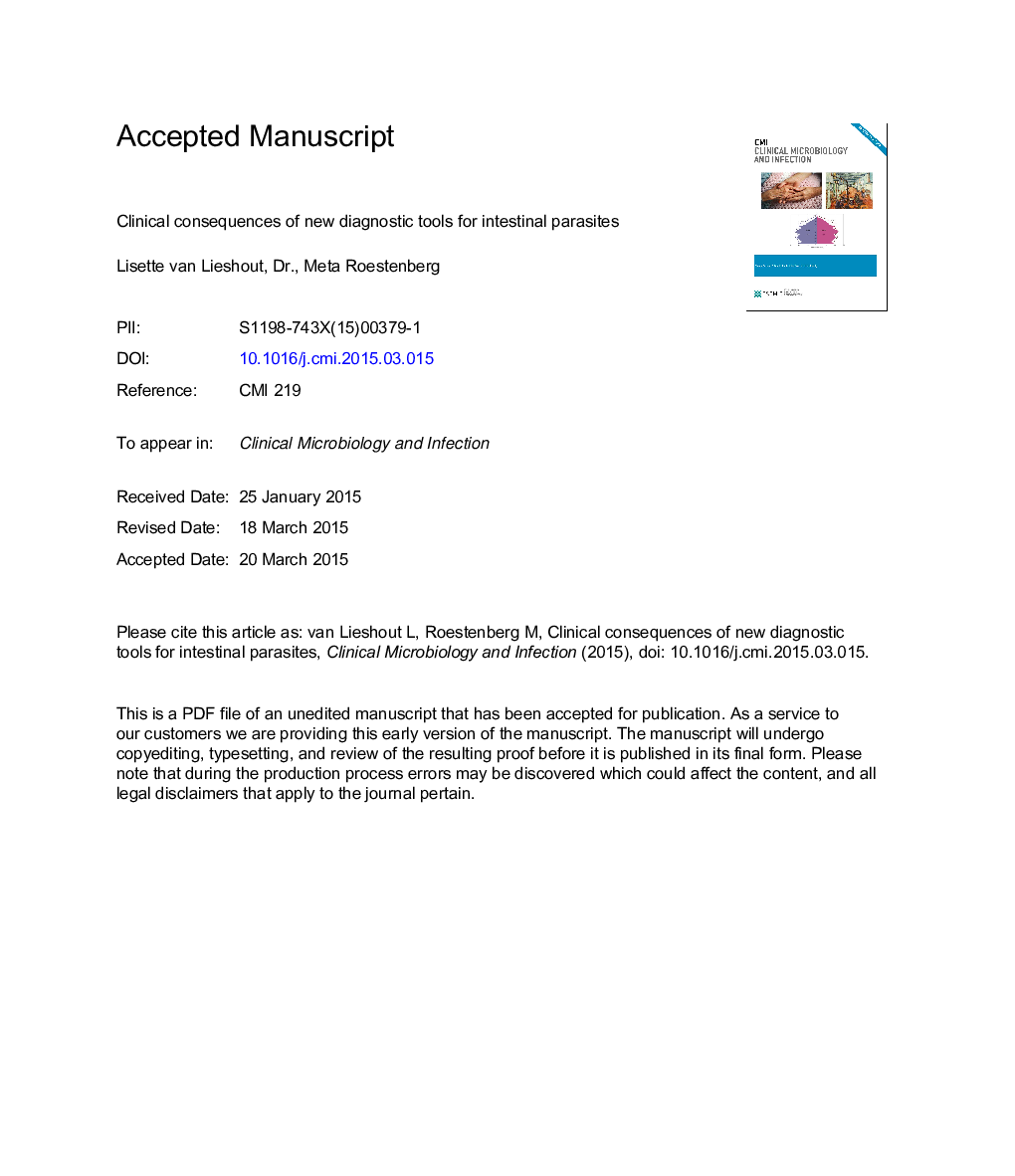| Article ID | Journal | Published Year | Pages | File Type |
|---|---|---|---|---|
| 6129324 | Clinical Microbiology and Infection | 2015 | 31 Pages |
Abstract
Following the success of nucleic acid-based detection in virology and bacteriology, multiplex real-time PCRs are increasingly used as first-line diagnostics in clinical parasitology, replacing microscopy. The detection and quantification of parasite-specific DNA in faeces is highly sensitive and specific and allows for cost-effective high-throughput screening. In this paper we discuss the clinical consequences of this radical change in diagnostic approach, as well as its potential drawbacks. In the Netherlands, routine diagnostic laboratories have been pioneering the implementation of multiplex real-time PCR for the detection of pathogenic intestinal protozoa and this has resulted in increased detection rates of Giardia lamblia and Cryptosporidium spp. As a consequence of this new diagnostic approach, expertise in the field of parasite morphology by conventional light microscopy seems to be disappearing in most of the high-throughput microbiological laboratories. As a result, to maintain a high standard of care, a formalized exchange of critical information between clinicians and laboratory staff is necessary to determine the most appropriate testing either in local laboratories or in reference centres, based on clinical signs and symptoms, exposure and immune status. If such a diagnostic algorithm is lacking, important infections in travellers, immigrants and immunocompromised patients may be missed.
Keywords
Related Topics
Life Sciences
Immunology and Microbiology
Microbiology
Authors
L. van Lieshout, M. Roestenberg,
